Welcome to my first introduction to Wildlife Conservation – My attempt to understand what it takes to run a wildlife reserve and how it feels to be a part of it. This is a short write-up on my memorable 2 weeks at Shamwari Conservation Experience at their beautiful East Cape Reserve in South Africa.
During all of my trips, i always think of blogging about it so i can capture the memories when they are clear and vivid – however the minute i return home, real life catches up and that motivation fades very quickly. So this time around i started capturing my thoughts as and when they occurred during the trip. So am glad to see this blog is seeing the light of day.
I have been to game safaris in Africa on a couple of occasions. Once at Maasai Mara in Kenya and another at Kruger Park in S.Africa (with Smitha). So “seeing the big 5” is no longer a motivating factor for me. However i did have mixed feelings between the 2 trips. Kenya, may be being the first, was super uplifting. It was exciting to see the animals in their natural habitat for the first time, behaving quite differently from the usual zoo environment. The people i met were also incredibly humble and nature conscious and hearing their opinions and seeing them at work was quite inspiring. However when i went to Kruger it was less than satisfying. Maybe i had unreal expectations but i felt the people there were more commercial-minded and aggressive / alpha-male types, competing to out-do each other.
In both what stuck in my head was my interest in understanding animal behavior and how human beings interact with them while keeping the park “wild”. So i started looking into volunteering in a wildlife conservation reserve. After researching on various options across the world, i decided on Shamwari experience in s.africa. Basically it came down to variety of work and ability to work with animals at an arms length avoiding ethical and moral grey areas. If you like more details, feel free to drop a line.
Typically these experiences can last anywhere between 2 weeks and multiple months. I chose 2 weeks for various reasons – my available holidays, my reluctance to being away from Smitha for longer-than-necessary (she did not join me here) and my uncertainty on how i would feel about “supporting” the reserves given my previous experience in S.Africa. In hind-sight, it turned out to be the right decision.
The day i left was a bit weird. Usually the starting day of the holiday is exciting, despite the logistical issues to deal with. However, this was the first time since we got married that Smitha and I were not holidaying together. I felt guilty and uncertain – however my inner voice also told me that i needed to do this at some point to be able to see if this is indeed something for me. I was glad that Smitha also realized this. So though she was not happy about missing out on a holiday, she tried to make it easy for me to do this. Interestingly even leaving Amsterdam felt a bit weird for some reason. So during my journey, i was more looking back at what i was leaving than forward to where i was going. Gradually the feeling turned around as i reached the bright and sunny s.africa and met some charming service fellows in the airport, showing their cheery african side.
The other exciting part in this adventure for me was the opportunity to meet and interact with new folks from around the world. I have always enjoyed staying in hostels during my backpacking days for this very reason and this conservation experience also attracted similar set of independent travelers who i connect with quite well. So when i met the initial set of folks at the airport, i began to relax and look forward to the adventure.
We arrived at the camp from the Port-Elizabeth airport after a bumpy yet relaxing ride through the bush. I noticed that most folks that did this were young students who were traveling for their gap year to “figure out what they want to do with their life”. I sort of felt like a dinosaur :). However, independent travelers usually are very open minded to new people and experiences and eventually i started feeling like part of the crowd. One more reason why i feel quite comfortable traveling alone.
So what is conservation experience? Basically (atleast at Shamwari), this gives you an overview of all the activities that go into running a game reserve – includes physical activities like repairing roads/bridges, cleaning up alien vegetation, tracking and monitoring animals, taking care of injured ones, working with local communities to connect with them and help them understand the need to preserve animals (against poaching or general killing due to fear/lack of understanding).
As enlightening as these operational details were, i had more fundamental questions lingering in my mind – why do we need wildlife conservation? Dont the species grow and die naturally? so if a species is not “fit” by Darwin’s definitions, is it right to try to preserve them? isnt it even a futile exercise? I did gain lots of answers on this which i will delve into separately.
Coming back to the experience, very quickly we settled into the “bush routine”. Getting up early to be ready for our daily activities by 8, have a packed lunch in the bush at around 12, return to have dinner at 5 (yes – that early) and have the rest of the evening for yourself – lots of us actually went to sleep by around 9! One of the best things was we got up every day to the sounds of birds and sometimes animals. The air was also crisp and refreshing. Although Amsterdam is a fairly green city, the gift of waking to nature’s sounds is very energizing.
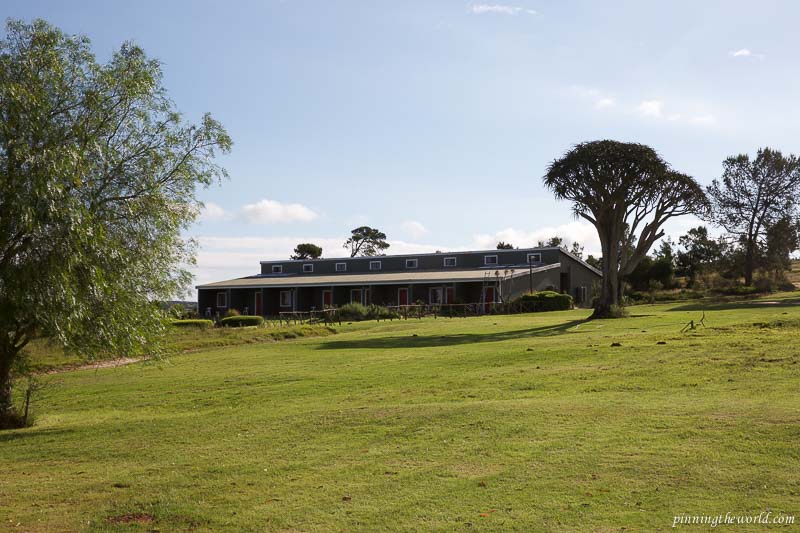
Our accommodation at Shamwari Camp – surrounded by fresh greenery
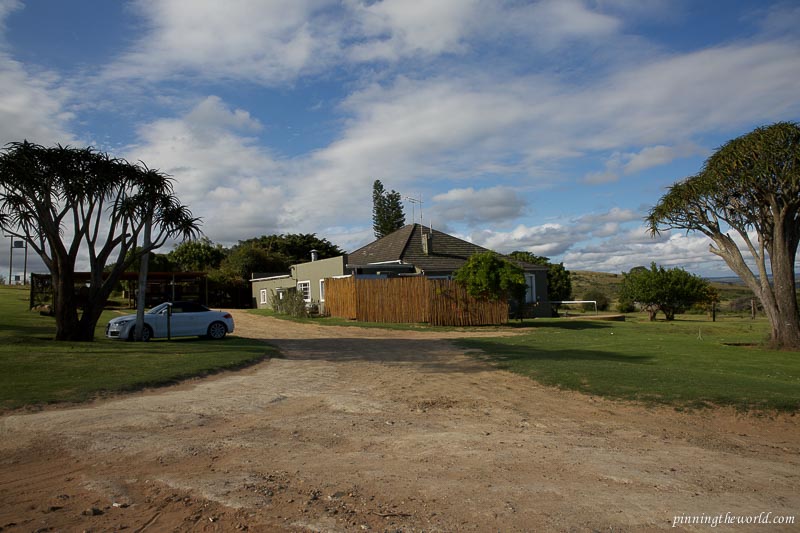
The common area, where we dined and relaxed, surrounded by monkeys, antelopes and various birds
The activities were quite varied. Atleast one group each day went to monitor animals – primarily elephants, but also rhinos and sometimes wild cats like leopards and cheetahs. Another group usually did some physical activity like road/bridge repairs, clearing of alien vegetation, fencing, clearing and refilling the waterholes and any other repairs that are needed for the reserve.
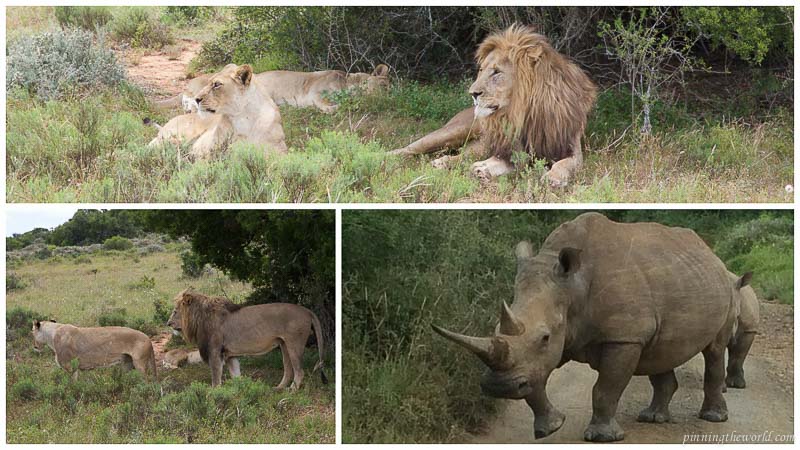
The majesty and the power of these creatures take a new dimension when you get really close, though they seem deceptively tame
Since cheetahs and leopards have larger territories that spanned multiple reserves, they are tracked using telemetric systems which needs line-of-sight to get the signals. So usually we were able to triangulate the general location from higher ground, but the dense vegetation made it difficult to get a visual. Luckily we were able to spot a family of cheetahs when they were crossing the valley.
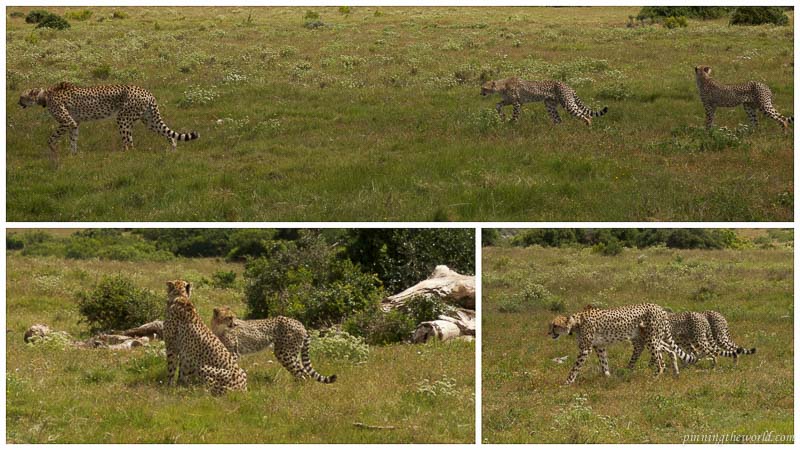
Despite their speed and power, cheetahs never exhibit the confidence of a lion – they always seem to be alert and careful
The physical activities like bridge building actually turned out to be more fun than expected. After spending a life-time working with just computers, it was liberating to actually get our hands dirty mixing sand, water and cement, clearing out debris, breaking and arranging the rocks and building an actual working bridge. It made the food and tea breaks lot more enjoyable. I hope the bridge stays put during their next flooding season 🙂
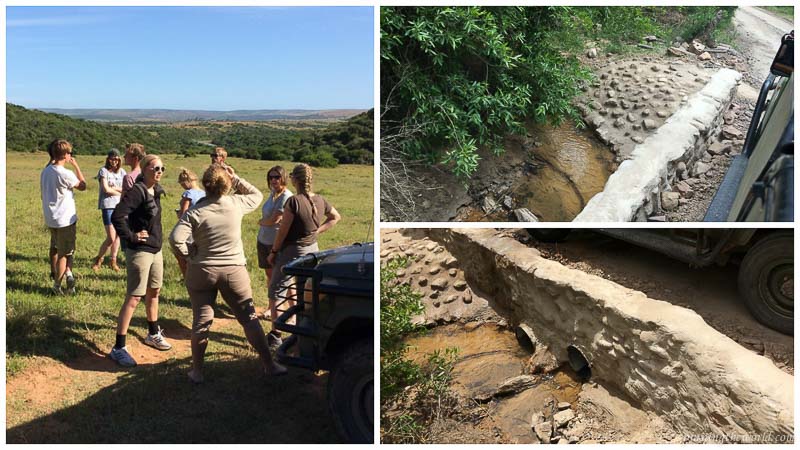
A nice tea break after our great bridge-building achievement 🙂
If you are lucky or stay long enough you can get to do some sexy activities like working with animals in the rehab centre (for injured animals that will eventually go back into the wild) or in born-free centre (a retirement home for old/abused/terminally injured animals). I got to visit these centres and learn about them but unfortunately i only ended up cleaning the feeding cages of big cats (removal of carcass, cleaning out weeds, fill-out water holes etc…).
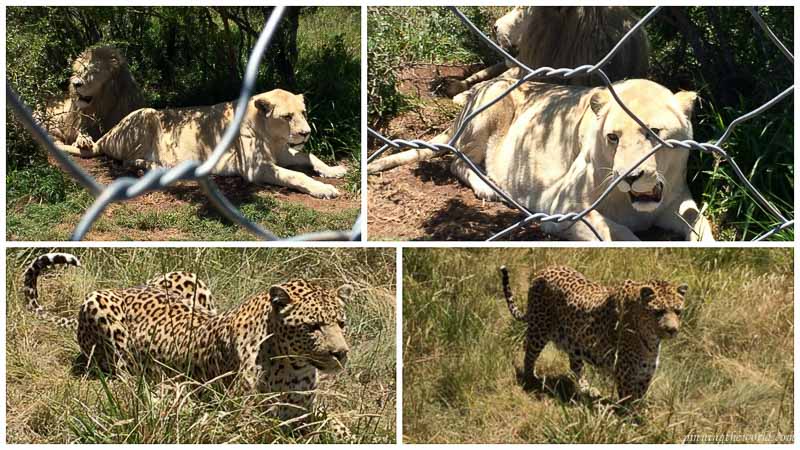
The genetically unique white lions and some previously-abused Sudanese leopards at the born-free center
Another interesting activity was to help the anti-poaching guys during their night patrol. But this is basically a late-night game drive while monitoring the area for any suspicious activities. Finally we also went to the shooting range to learn about guns, when they use them, the s.african culture of guns and also try our hand at shooting. While some women were too shaken up by the power of the guns, most of us loved it. For me it was the challenge of getting the shot right that spurred me. We also realized how easy it was to pull that trigger without fully digesting the damage it could cause – that power was scary. This obviously triggered (pun intended) conversations on US gun laws. We had a couple of Americans in our group and the Europeans took great pleasure in pulling their legs on this topic – i have to say those 2 americans took that quite sportingly, but it brought out the dramatic polarization of opinions about the use of guns.
Finally, every friday was also the community day. We went to a nearby town or village and interacted with the local community – either building/repairing things in local schools, nurseries or just spending time with them in old-age homes etc… The goal was to stay connected with the neighbours, have their support on conserving wildlife and enable peaceful co-existence of animals and human beings. We ended up spending one of the fridays in an old age home where they cheerfully entertained us with their dance, music, food etc… During the second week we went to repair some of the broken windows in a primary school. All these reminded me of our trip to the Amazon rain forest and the local communities there. I hope these community interactions are actually useful in building that bond and minimizing poaching in the future.
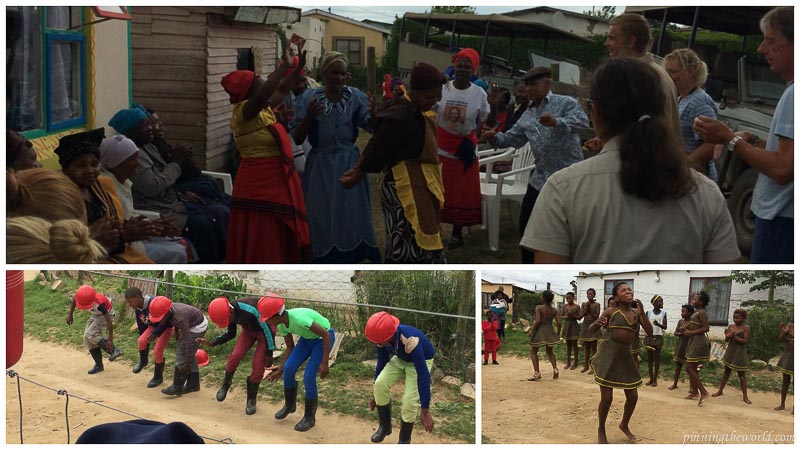
Entertainment from the local community – we met some fiesty divas amongst both the kids and the elderly – was loads of fun
In general I enjoyed all the activities, particularly given the short stay. A nice variety that kept things interesting. The visits to the born-free and the rehab centre were the most enlightening, not to mention some emotional conversations about animal treatments and conservation. The monitoring activities were sometimes quite interesting – like when we saw a massive herd of elephants with a tiny new born. The elephants were quite protective and one of them even trumpeted to warn us to stay away. We were tasked with taking count to keep track of the family members like the big bull (the giant male elephant), the female ones, the sub-adults and the kids and build out all the family trees. It was all quite confusing for me to be honest given we were trying to differentiate the animals based on characteristics like small damages to their ear, length/shape of the tusks, size of the tail etc…. Thankfully there were some really trained eyes that did the job and i just enjoyed the ride 🙂
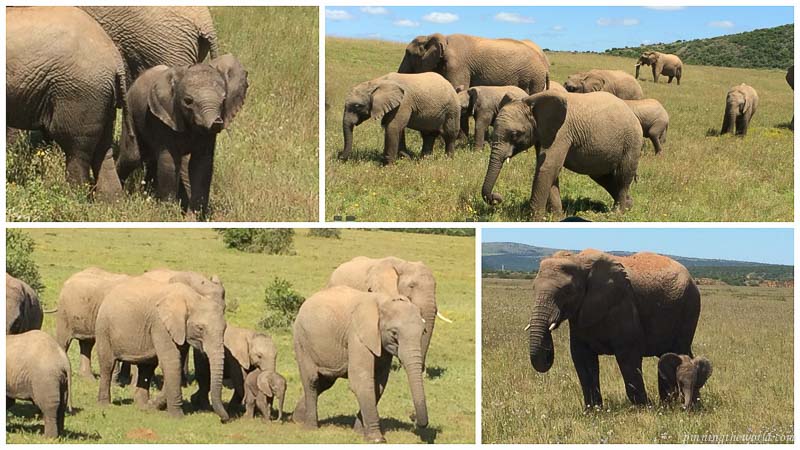
We spent nearly a whole day tracking this family. Obviously the baby was the center of attraction
The rhino monitoring is more critical as they are the most sought-after animals by poachers, for their horns. It was quite sad to see some photos of mutilated rhinos by these poachers, at the rehab centre. As i am writing this it appears the Pretoria high court has lifted the ban on rhino horn trade – the reason? the government did not follow due process when bringing about the ban! talk about the world’s most pathetic reason. Highlights why wildlife conservation might be a futile exercise when the world is run by human beings!
After a few trips i began to think there should be better ways to keep track of animals than manual counting. I heard later that cost was an important reason for keeping this manual. (remember volunteers actually pay to do this). Besides they are also trying to avoid darting animals to tag them – guess a fair compromise.
Evenings were fun and relaxing for a different reason. We had a very early dinner at 5, after which there is little else to do. So we usually played sports like volleyball, ping-pong, pool etc… or just sat around a fire and talked our time away. After a few drinks, the conversations usually took an interesting turn!. Many of us also retired to the rooms early some days for some reading, blogging etc… before going to sleep early. With limited TV-watching (though we had one) it is amazing how much time you have at your disposal; i can get used to this lifestyle 🙂
After a full week of conservation activities, people usually looked forward to the pub-night on fridays. It was a throw-back to college days for the middle-agers like me while for the youngsters it was a chance to go crazy. Given the location we had to drive about an hour or more to get to a decent pub. So we usually left at around 8 pm and would stay there until the pubs closed at around 2 am. I am usually quite conscious and aware of my drinking with strangers – so i quite surprised myself getting silly drunk and apparently “showed my funny side” – making some more friends in the process. Usually some of the out-of-control youngsters snogged or did something else crazy, that would be entertaining and a topic of discussion for others. Saturday would be lost to hang-overs, watching TV for the whole day before getting back to some semblance of normalcy on sunday. Some folks also did some activities like sky diving, horse riding etc…. but given my short stay and the long drives involved, i didn’t get to do any.
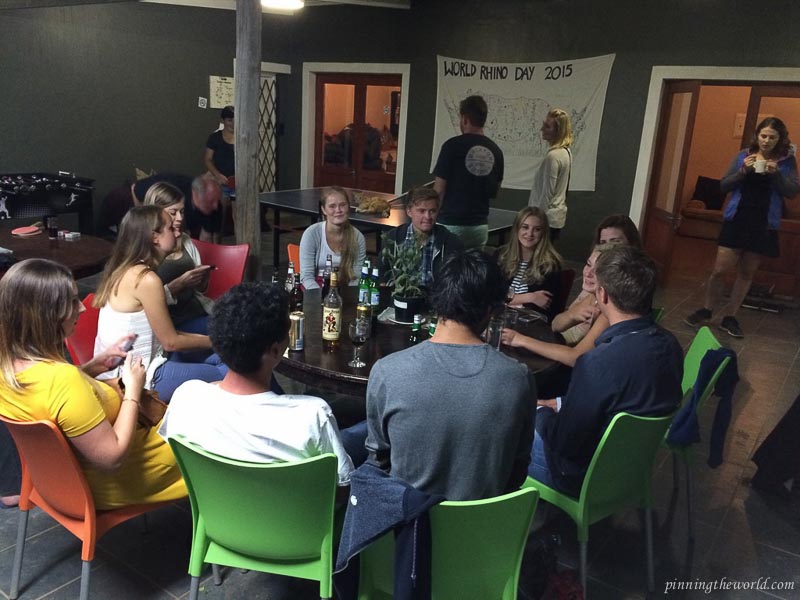
The pre-drinking game ritual before heading out to the pub
Finally after 2 weeks of this, i was ready to leave. I was surprised how sad i got when leaving the place – though work-wise i was ready to leave, the option to stay with nature cut off from the craziness of the real world and being in this bubble with so many nice folks was quite liberating. I even felt out of place on my first few days back in Amsterdam. May be it was sweet because it was short.
Gradually my mind moved back to Amsterdam and was energized by the thought of seeing Smitha again. I hope one day we would be able to travel together back to nature and stay there longer. Much longer.
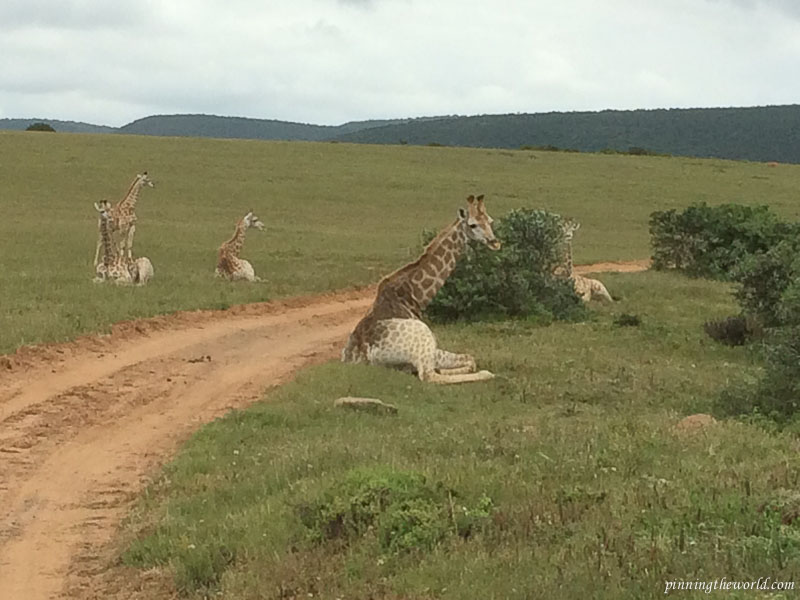
No Comments Yet